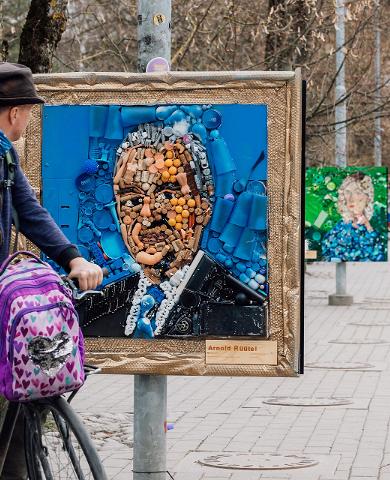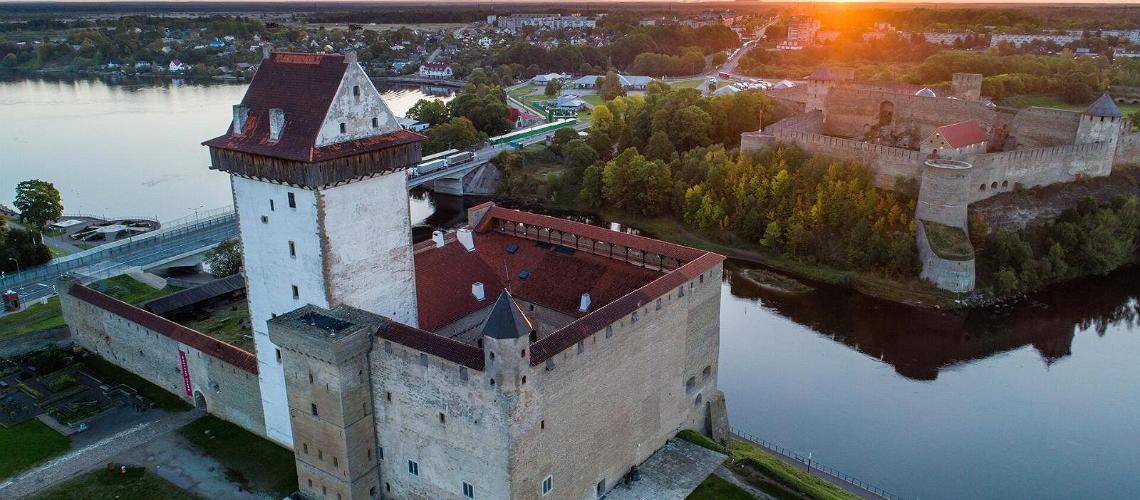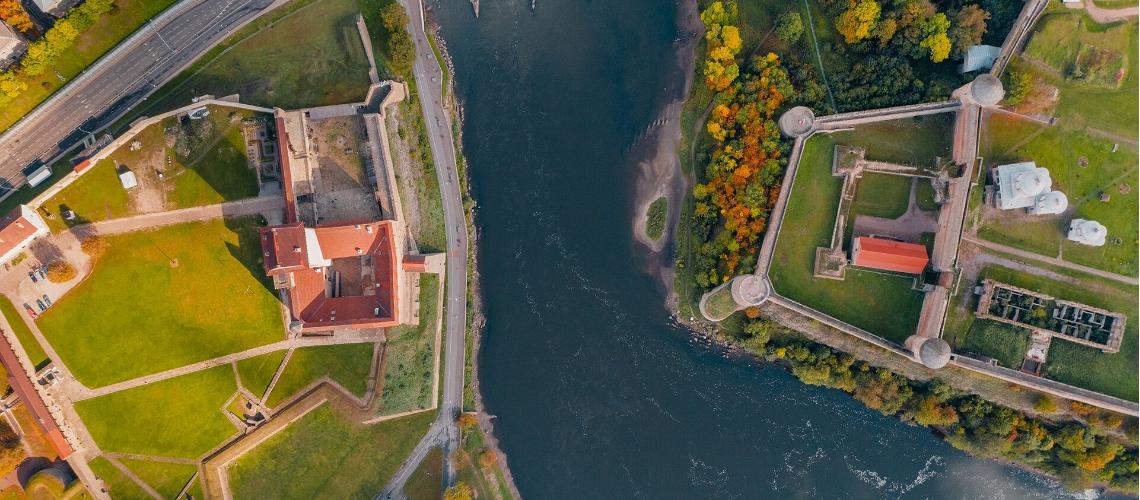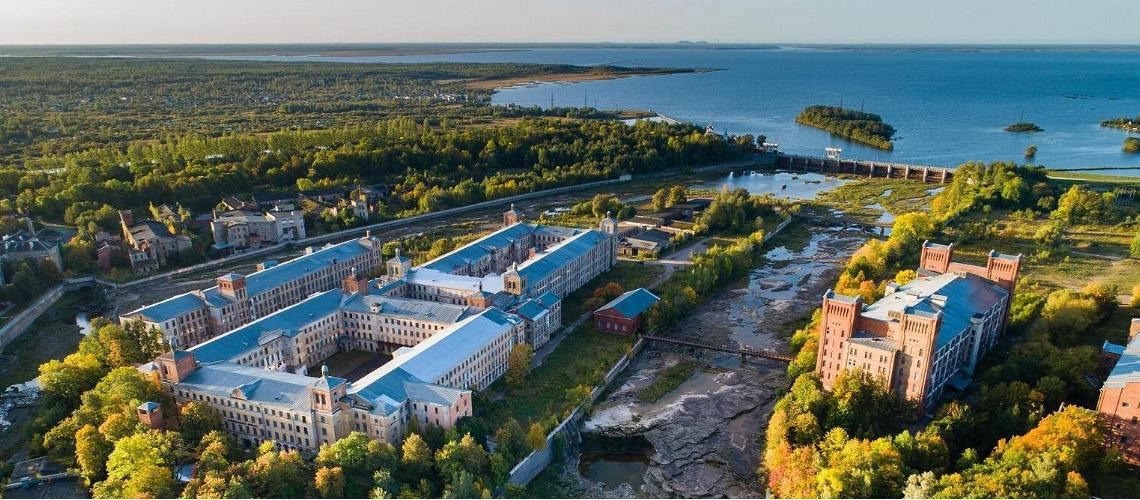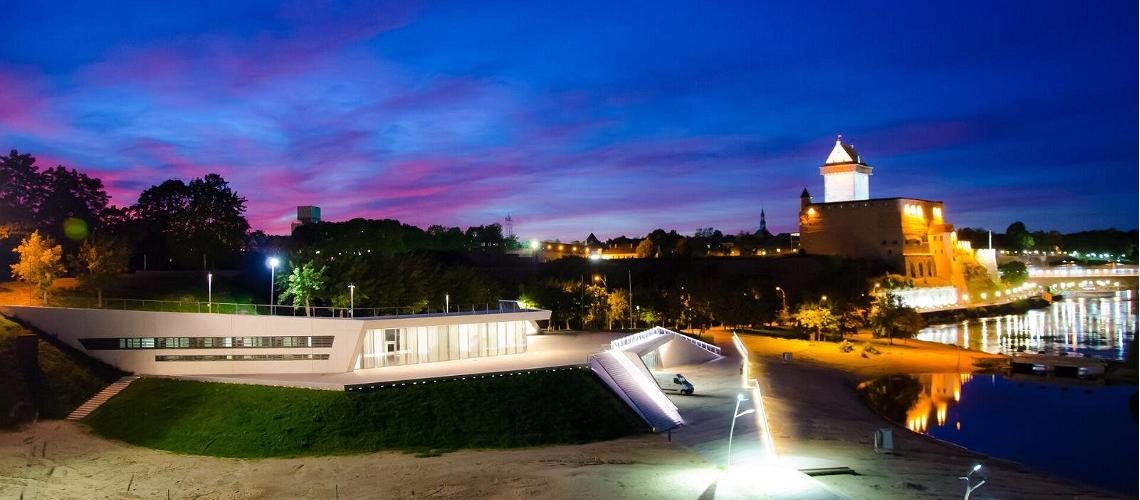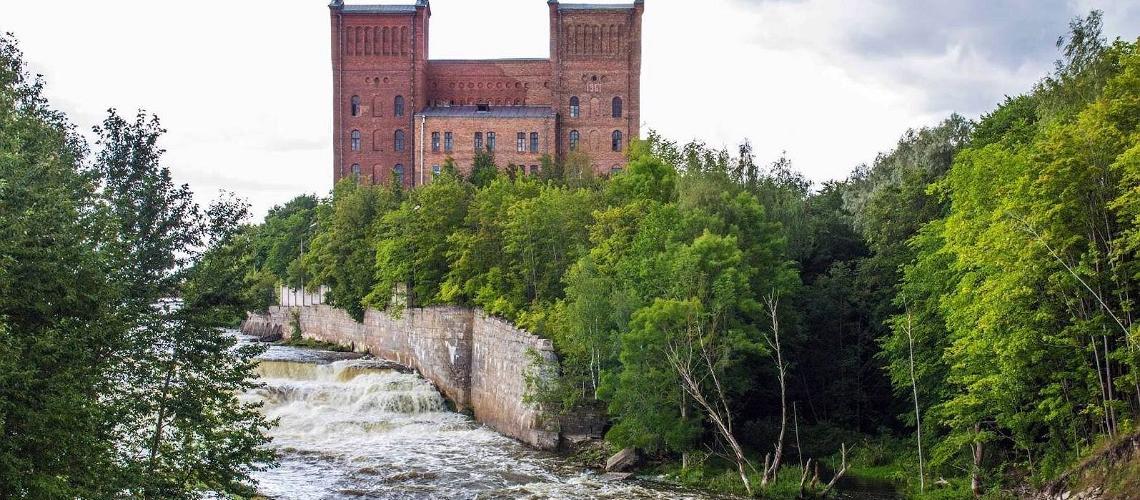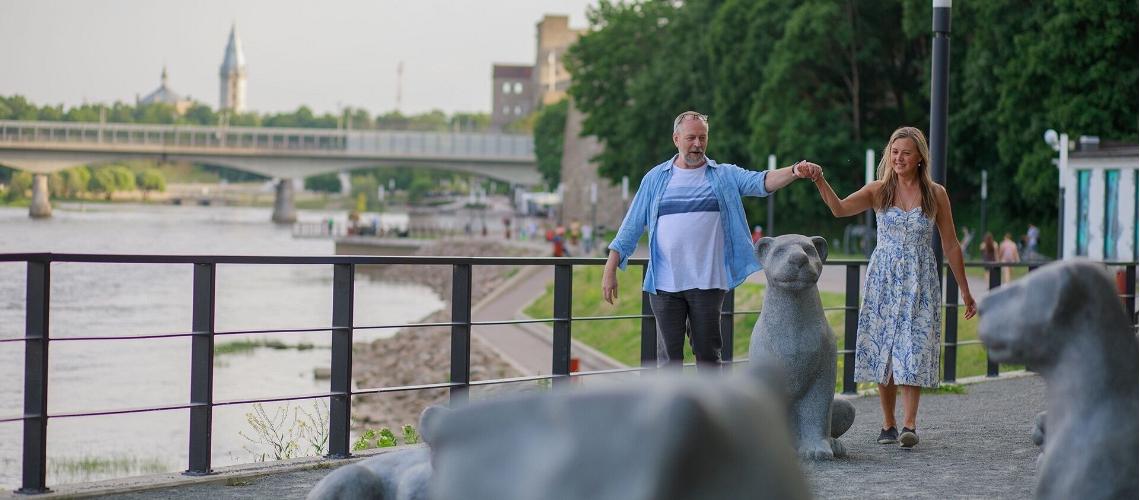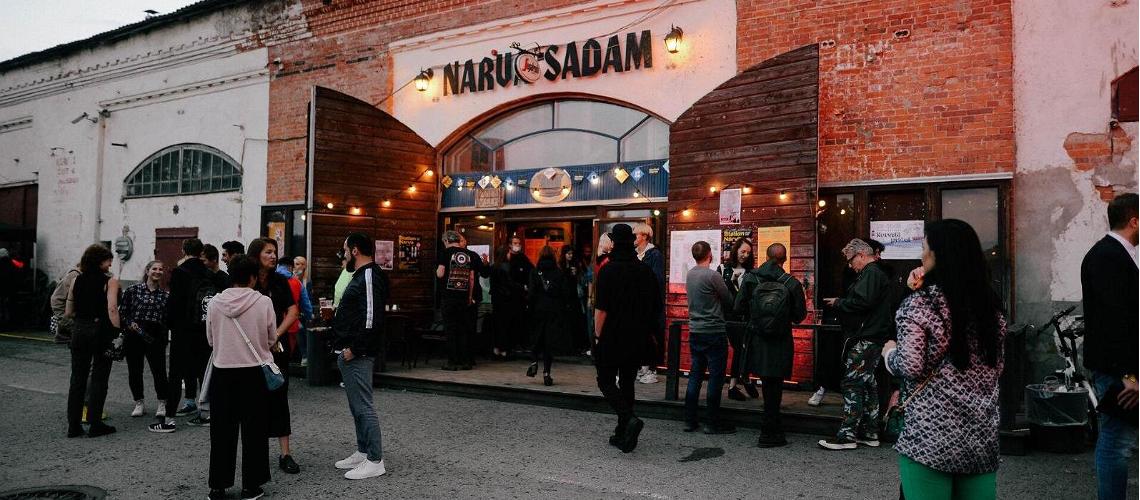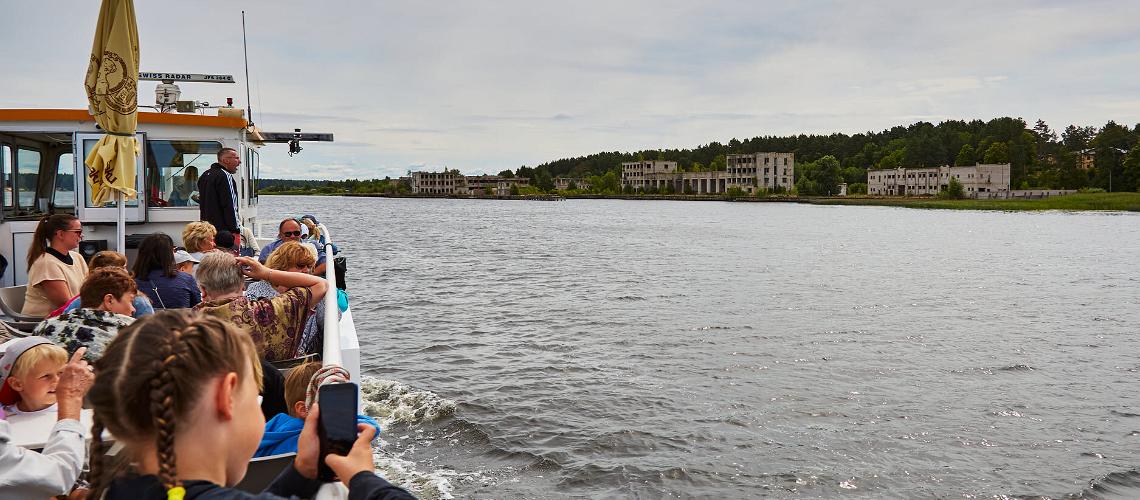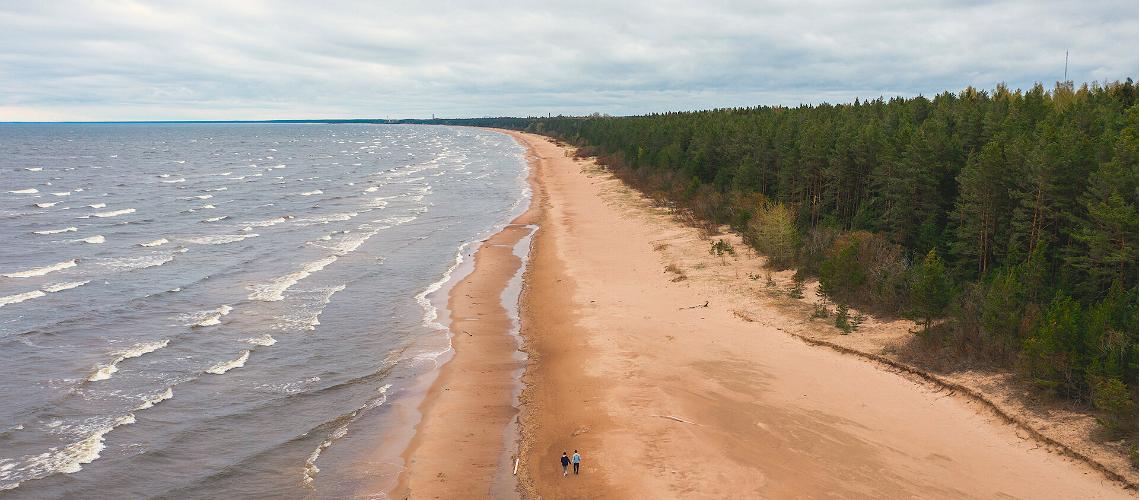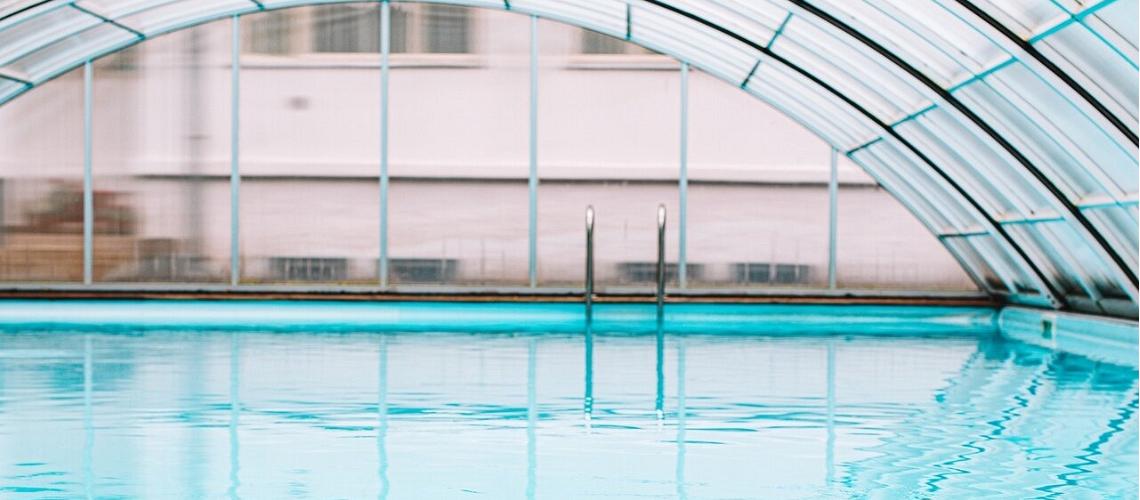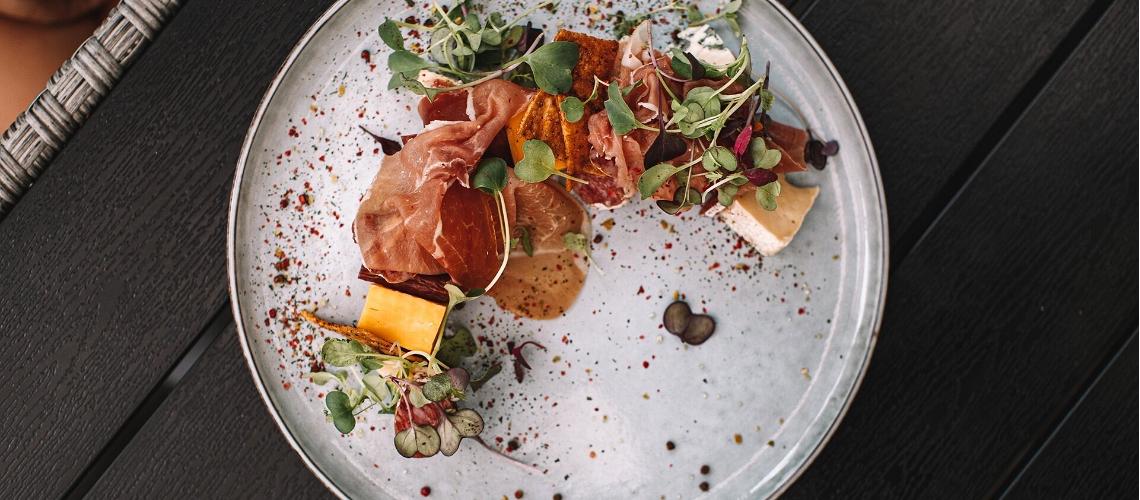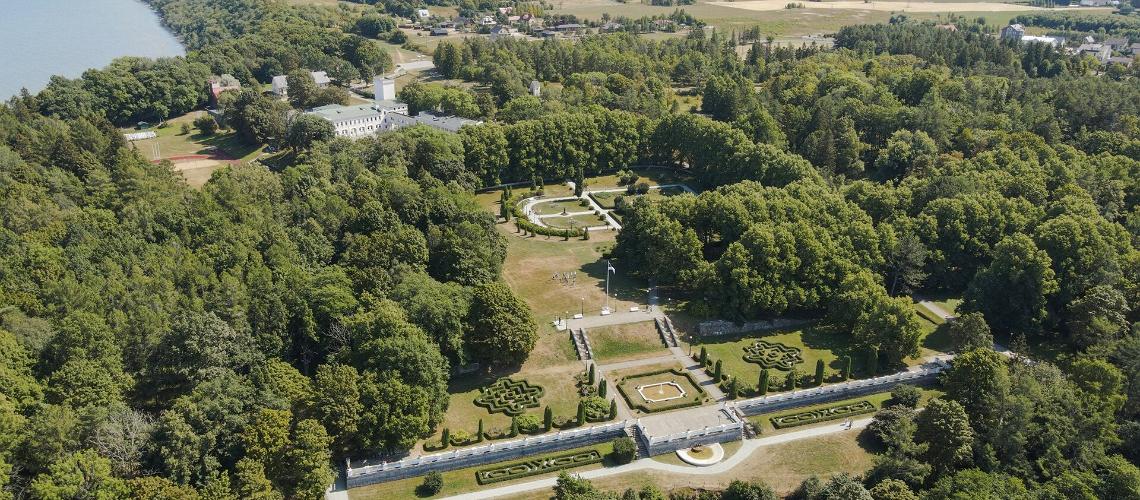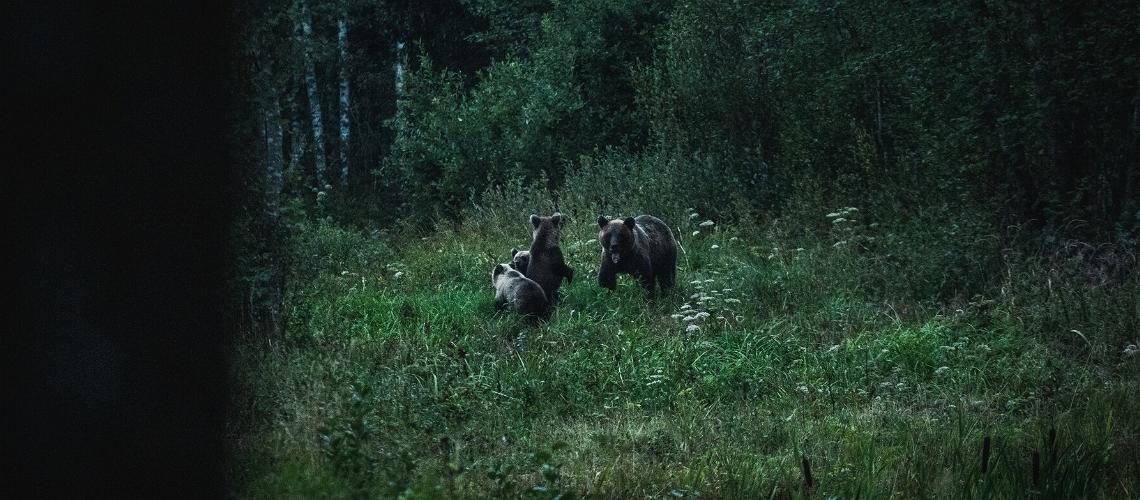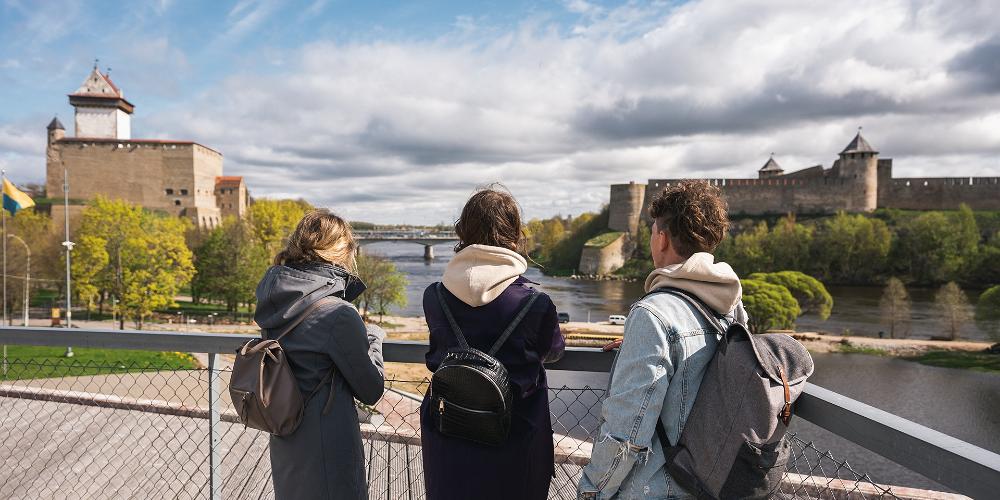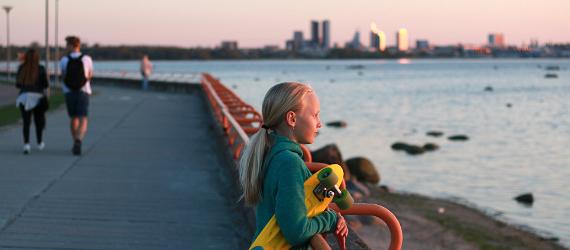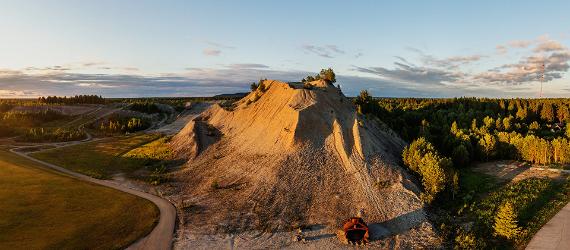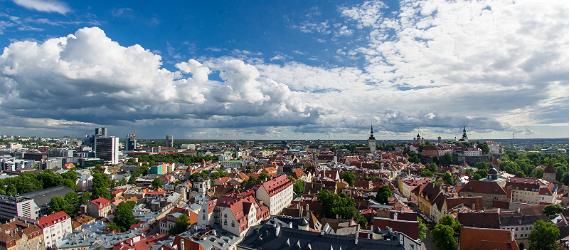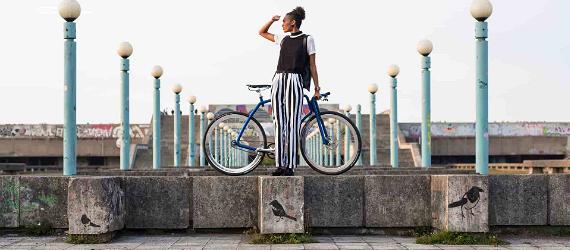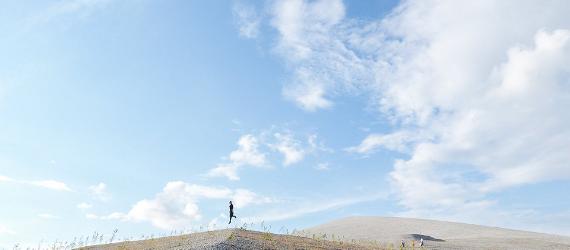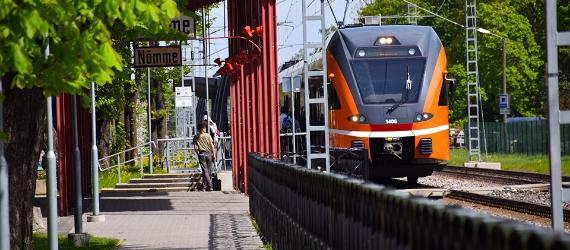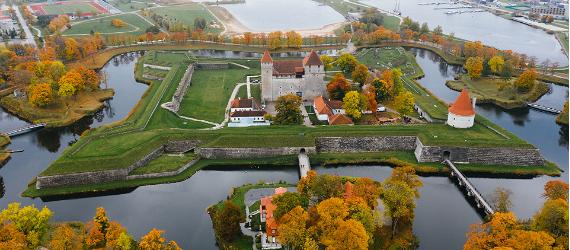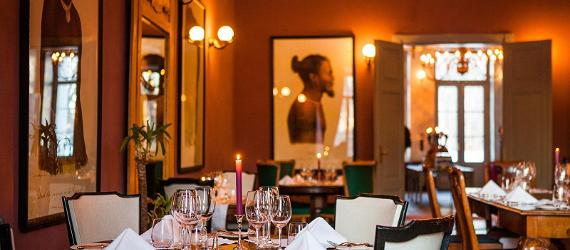Narva — the city where East and West collide
A vibrant city with a unique blend of cultures and an incredible history, Narva offers visitors the opportunity to immerse themselves in the past and enjoy modern conveniences at the same time.
History at the crossroads
Narva has always occupied an important place on the map of Europe. Thanks to its convenient location at the crossroads of several trade routes, Narva has always been at the center of international trade, regardless of the war games. During the Viking Age, a trade route known as "from the Varangians to the Greeks" passed by here, and then later on, the trade road from Tallinn to Novgorod and St. Petersburg passed through Narva. The first mention of Narva in the Danish land register occurs in 1240, and in 1345, the settlement was given the status of a city.
The city of Narva has had many owners — Danes, Germans, Swedes, Russians, and now, Estonians. Up until the fourteenth century, the city belonged to Denmark, and then passed to the Livonian Order. Hermann Castle (also known as Narva Castle) was built during this period, and today it is still the city's main attraction as it houses the Narva Museum. To defend against Livonian and Swedish troops, Ivan III ordered the construction of a fortress on the other side of the river in Ivangorod. Narva Castle was named a finalist in the British Guild of Traveler Writers award for Best Europe Tourism Project.
Narva's Russian period began with the siege of the city's fortress during the Northern War. At first, Swedish troops defeated the Russian army, but four years later, Tsar Peter the Great won the war. Narva was united with Ivangorod and became part of the St. Petersburg province.
Before World War I, over 21,000 people lived in Narva. After World War I, the city's residents voted to join the newly independent Estonian nation. The city saw fighting during the Estonian War of Independence, but great destruction wasn't done to the city until World War II. Heavy shelling by the Soviets during the Battle of Narva in February 1944 destroyed much of the city, and the bombing of Narva by Soviet aircraft on March 6, 1944, razed the historic old town to the ground. The Kreenholm Textile Factory area remained more or less untouched. In 1944, only 550 people remained in Narva. Today, more than 53,000 people live in Narva, and it is the third-largest city in Estonia.
Visit Narva to see past and present side-by-side...
Immerse yourself in the atmosphere Narva's different historical eras: walk through the places harkening back to the time of Tsar Peter the Great, look at examples of Soviet architecture, or just relax on the banks of the Narva River.
A walk along Narva's romantic promenade is a great place to start your city tour. There are summertime kiosks, a fountain, a sundial, and many sculptures along the way. The main attraction is the view of the two fortresses known as the the "Five Krooni View" as the same image can be found on the back of the old Estonian five krooni bill. The observation deck of the same name is the best place to take in the sight of Narva Castle, the Narva River, and Russia's Ivangorod Fortress on the other side.
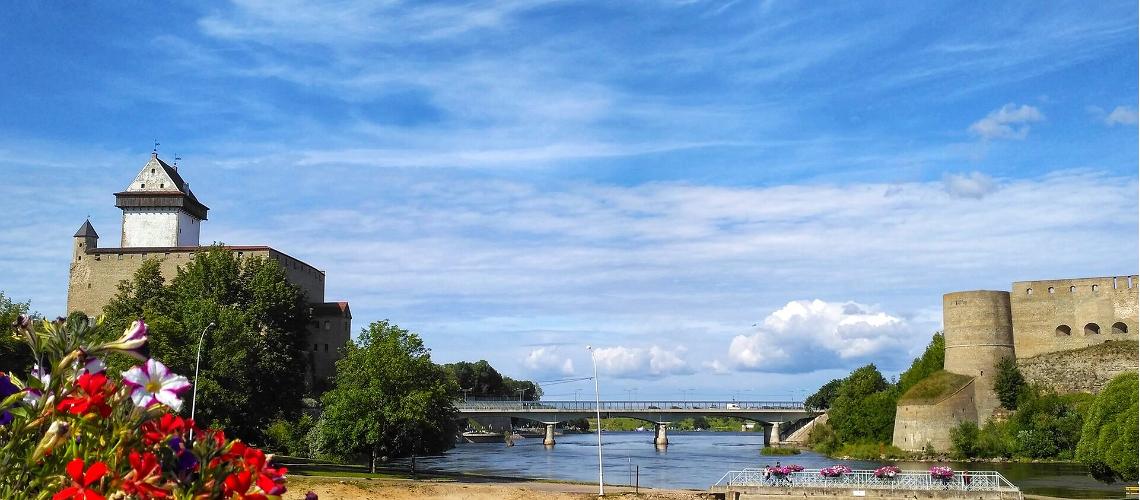
The famous "five krooni" view of the two opposing fortresses on either side of the Narva River
Photo by: Olga SmirnovaTake a walk around the streets of Narva's Old Town. The tourist information center is located in the newly-renovated Town Hall, where you can also take a VR tour that shows you what the city was like before the 1944 bombing. Stop for lunch at Café Muna, located next door on the ground floor of Narva College. Then visit the Dark Garden, the oldest park in the city, located on top of Victoria Bastion. If you're feeling brave, explore the underground passages where you may come face-to-face with their inhabitants — bats!
Follow the signs for Hermanni Linnus (Hermann Castle), another name for Narva Castle. Built by the Danes in latter half of the eighth century, it is the best-preserved defensive structure in Estonia. For an extra bit of romance, spend the night at the castle in one of the rooms off the North Yard, and add your leaf to the tree on the grounds where newlyweds hang metal leaves engraved with their names for good luck.
Chess fans (or those looking for an Instagram-worthy shot) should take a seat next to the statue of famous Estonian chess player and international grandmaster Paul Keres in the park on Pushkin Street. Sit down at the table opposite the bronze Paul Keres and reflect on the game and smile for the camera! Dinner can be had at Restaurant M. Chagall, where local ingredients, including the infamous lamprey, take pride of place.
The Kreenholm Textile Factory
The Kreenholm Textile Factory is one of the most fascinating tourist attractions in Narva. When it was built in the 19th century, it was the largest textile factory in Europe and the Russian Empire. In 1913, over ten thousand people worked there, and the area had everything the workers needed: shops, hospital, school, churches, and more. The company declared bankruptcy in 2010. Nowadays, the factory hosts various cultural events (including Station Narva, Narva Opera Days, and the Narva Art Residency). Guided tours run on Sundays, or you can take a free self-guided audio tour available in multiple languages around the grounds. During the spring, the nearby hydroelectric power station releases water out of the reservoir creating impressive cascades around the island.
The evening is definitely worth spending at the famous Ro-Ro Art Club, which is located in Narva harbour's former cotton warehouses. A hundred years ago, cargo ships from various countries arrived in Narva with cotton for the Kreenholm Factory; today musicians come to perform from all over Estonia, Europe, and overseas.
Top events in Narva and Narva-Jõesuu
- Stebby Night Run: Early in December, runners can choose the 5K or 10k route and race through Narva accompanied by the festive lights of the Christmas season.
- Christmas Village: Set up in the North Yard of Narva Castle, the Christmas Village is the highlight of Narva's holiday season.
- International Freedom Theater Festival: This festival invites small theater companies from countries where there are serious problems with freedom of speech and where artists have been exposed to censorship that restricts creative activity.
- Narva Opera Days: Held in the Kreenholm area and nearby manor homes, Narva Opera Days features contemporary classical music and well-known pieces performed by young artists and experienced professional.
- Station Narva: Station Narva has quickly become a popular cultural event in eastern Estonia. The event includes performances by international artists, well-known Estonian artists and musicians from Ida-Viru County, free daytime concerts, public discussions, an entrepreneurship day, art exhibitions, excursions, community gatherings, and a traditional Narva breakfast.
- Night Bazaar and Lamprey Festival: During the traditional Lapmrey Festival, a fish market is open for fishermen as well as those who simply love fish. Can't make it to the festival? Try lamprey at Restaurant Rondeel in Narva Castle.
...relax along the "Riviera of the North."
About 13 kilometers north of Narva is the seaside resort of Narva-Jõesuu. The first spa facility opened here in 1876, quickly earning the area the nickname "Riviera of the North" among the Russian nobility in Saint Petersburg who came to visit in the early 20th century.
It's easy to reach the town by bus, but the most picturesque way to travel is by boat. During the summer months, the Caroline ferry departs from the pier near the Ro-Ro Club in Narva. Travel on the line dividing Estonia and Russia while enjoying postcard views of the riverside and eating delicious snacks from the ship's buffet. You can stay overnight in Narva-Jõesuu or go back the same day, though we recommend you stay!
After Pärnu, Narva-Jõesuu is considered the second most popular resort town in Estonia. There are three excellent spa hotels here: Meresuu SPA, Noorus SPA, and Medical SPA. Rather relax on the beach? Narva-Jõesuu will not disappoint; the beach has nearly eight kilometers of beautiful fine sand! Top off your stay in Narva-Jõesuu with dinner at Franzia, one of the few area restaurants that has made it into the White Guide Nordic.
A little further west along the coast is the Toila SPA Hotel. This city was also a popular summer resort at the end of the 19th century. A secluded location, sauna center, and a wide range of services allow you to sit back and relax. If you find yourself in Toila, then take a look at Oru Park where you can admire the sea view and sunset from the gazebo.
If you desire even more privacy and seclusion, then you continue west along the coast to Saka Manor. There you will find luxurious hotel rooms, a cellar restaurant, and a cozy spa. The manor park is excellent for walks and picnics. You can climb the observation tower, which is located right on the edge of the cliff. While you're in the area, stop at Valaste Waterfall, the highest waterfall in Estonia.
...uncover the hidden gems of Ida-Viru County.
As you travel between Tallinn and Narva, there are several places worth visiting along the way. Or use Narva as your base to explore the greater Ida-Viru County — you'll find plenty of adventures to keep you busy for days!
- History lovers will want to make a stop at Purtse fortress, a beautiful residential building from the 17th century. Have a bite to eat at Von Taube, the castle's restaurant, where rustic dishes are served in a historic setting.
- Kiviõli Adventure Center is located on an artificial mountain built from slag from nearby oil shale mines. In winter, there are ski slopes on one side of the mountain, and a snowboard and half-pipe park on the other. In summer, the mountain is lined with a health trail, downhill and off-road trails, disc golf, and more. At the foot of the mountain, is a family adventure park, a Estonia's longest zipline and a motocross track.
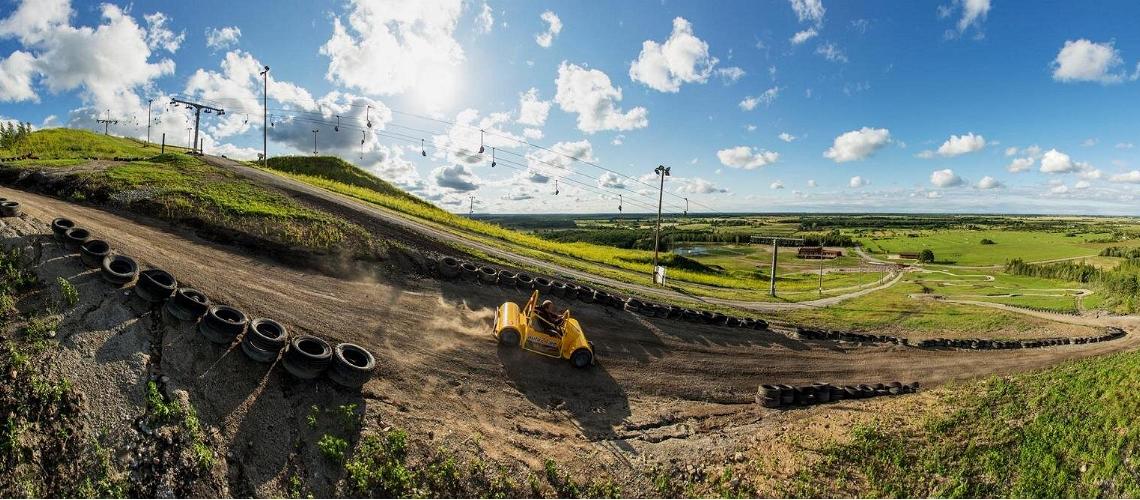
The post-industrial landscape in Ida-Vira County is the perfect setting for extreme sports!
Photo by: Joosep Martinson- The area of the defunct Aidu quarry has filled with water, creating a series of artificial lakes, perfect for hiking and water sports. Depending on the season, you can go extreme on off-road jeep tours, go hiking up the mountain, or take a nighttime raft trip.
- If you like architecture and history, head to Sillamäe — a former industrial town that was closed to the public during the Soviet Union.
- The Estonian Mining Museum has interactive exhibits that are fun for all ages, especially the underground restaurant!
Get active in Ida-Viru County!
Information on search results display in Article 12 of the Terms of Use.
...explore wild nature in and around Alutaguse National Park.
Forests, slag heaps, canals with blue-green water — you will not find another landscape like it anywhere else in Estonia. The northeast is a place of shale mining and processing, so industrial relics sit side-by-side with untouched nature.
Alutaguse National Park, created in 2018 to honor Estonia's centennial, encompasses bogs, forest habitats for bear, lynx, and flying squirrels, lakes, and the north shore of Lake Peipsi. Here are two popular hiking trails to for exploring the park:
- The Kurtna lake system is the largest in Estonia, with 42 lakes covering an area of 30 km2.The Kurtna hiking trail starts at the Alutaguse Recreation and Sports Center and has several camp sites with campfire spots.
- The Poruni hiking trail passes through the virgin forest along the banks of the Poruni River, a tributary of the Narva River. The entire trail, out and back, is 10 kilometers, but there is also a three-kilometer track.
Climb the 28-meter-high Iisaku lookout tower. From there, you'll get a beautiful view of the Alutaguse forests, and in clear weather you can even see the domes of Kuremäe Convent and Lake Peipsi.
The monastery was founded in 1891 and is Estonia's only active Orthodox nunnery. In ancient times, this was a sacred place for Estonians as there was a sacrificial spring was at the foot of the hill. Now the spring is known for its "holy waters" with healing powers. Nearby, you can visit the ruins of the 15th-century stronghold that once stood at Vasknarva. From there head to the beautiful beaches of Lake Peipsi.
Lake Peipsi is Europe's fourth largest lake in terms of size, and the Narva river flows from Lake Peipsi out into Narva Bay in the Gulf of Finland. The area along the west coast of Lake Peipsi is known for the communities of Old Believers who have made their homes there since the 17th century when they fled religious persecution in Russia.
A sustainable way to see Narva
Take the train!
Narva is approximately two hours and 20 minutes by train from Tallinn. Go for a day trip (takes even less time than the ferry to Helsinki) or take the train and then use Narva as a base to explore the rest of Ida-Viru County. Sillamäe, Narva-Jõesuu, the Estonian Mining Museum, and Oru Park can all be done as day trips using the bus from Narva.
If you must drive or want to stop to sightsee on the road from Tallinn to Narva, then check out our suggested roadtrip itinerary below.






